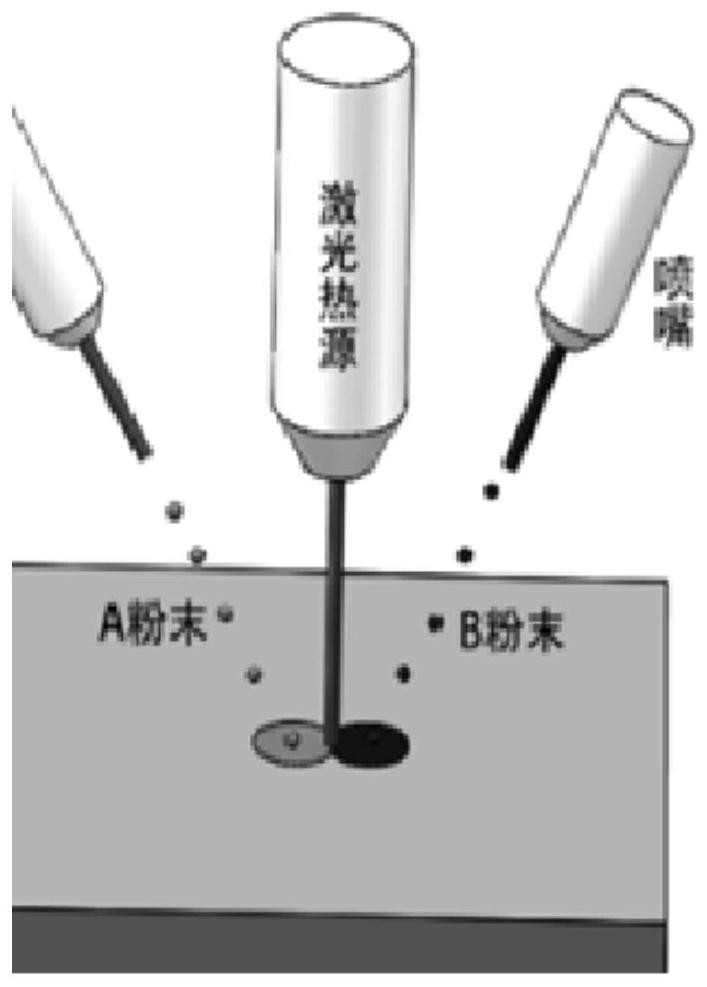A 3D printing monolithic alloy catalyst and its preparation method and application
An alloy catalyst, 3D printing technology, applied in carbon compound catalysts, catalysts, chemical instruments and methods, etc., can solve the problems of limited effective reaction area and reaction time, large temperature gradient of catalyst bed, and low strength of catalyst support, etc. The effect of saving material, flexible structure and wide application range
- Summary
- Abstract
- Description
- Claims
- Application Information
AI Technical Summary
Problems solved by technology
Method used
Image
Examples
preparation example Construction
[0033] The preparation method of the 3D printing monolithic alloy catalyst of the present invention comprises the following steps:
[0034] Step 1: Use 3D model design software to make a corresponding three-dimensional model with a channel structure, which can be in various forms such as porous, circular, honeycomb, and mesh, and convert the format of the 3D model into a binary format.
[0035] Step 2: Prepare the powder for metal 3D printing. The powder is divided into active component powder and carrier powder. The active component powder can be catalyzed by nickel, copper, cobalt, iron, titanium, vanadium, cerium, zirconium, etc. Active metal elements and carrier powders can be selected from aluminum, zinc, beryllium and other metal elements that are easily dissolved by lye. The particle size of the powder is required to be less than 100 microns in order to facilitate powder transportation.
[0036] Step 3: Design the catalyst printing formula, adjust the ratio of active c...
Embodiment
[0046] Step 1: Make a corresponding three-dimensional model with a channel structure through a 3D model design software, such as image 3 , in the form of a grid, each grid is 3mm long, 2mm high, and 1mm thick, and there are 6x4 grids on a cut surface, with a width of 70mm and the format of the 3D model is converted to a binary format.
[0047] Step 2: Prepare the powder for metal 3D printing. The powder is divided into active component powder and carrier powder. The active component powder is made of nickel metal elements with catalytic activity, and the carrier powder is made of aluminum that is easily dissolved by lye metal element. The particle size of the powder is required to be less than 100 microns in order to facilitate powder transportation.
[0048] Step 3: Select nickel:aluminum ratio of 1:2, this catalyst formula is especially suitable for methanation reaction.
[0049] Step 4: Program the binary information, determine the structural outline in the programming s...
PUM
| Property | Measurement | Unit |
|---|---|---|
| particle diameter | aaaaa | aaaaa |
Abstract
Description
Claims
Application Information
 Login to View More
Login to View More - R&D
- Intellectual Property
- Life Sciences
- Materials
- Tech Scout
- Unparalleled Data Quality
- Higher Quality Content
- 60% Fewer Hallucinations
Browse by: Latest US Patents, China's latest patents, Technical Efficacy Thesaurus, Application Domain, Technology Topic, Popular Technical Reports.
© 2025 PatSnap. All rights reserved.Legal|Privacy policy|Modern Slavery Act Transparency Statement|Sitemap|About US| Contact US: help@patsnap.com



